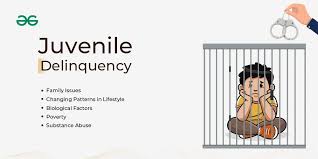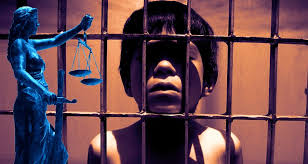Juvenile Laws at Norway
Norway’s juvenile justice system is widely recognized for its progressive, humane, and rehabilitative approach. It strongly aligns with international human rights standards, especially the UN Convention on the Rights of the Child (CRC), which Norway has incorporated into its national law. The system aims to prevent reoffending and focuses on reintegration into society, rather than punishment.
Overview of Juvenile Laws in Norway
📜 Key Legal Frameworks
The Penal Code (Straffeloven)
Sets out general rules for criminal responsibility, including specific rules for children and young persons.
Emphasizes reduced criminal responsibility and softer penalties for juveniles.
The Criminal Procedure Act (Straffeprosessloven)
Governs how criminal cases are handled, including procedures involving minors.
Requires child-sensitive procedures and gives judges discretion to consider a child’s maturity, background, and circumstances.
The Execution of Sentences Act (Straffegjennomføringsloven)
Regulates how sentences are carried out, including alternatives to prison such as youth penalties and community service.
Focuses on non-custodial sentences for minors.
The Child Welfare Act (Barnevernloven)
Applies to children under 18, focusing on protection, care, and development rather than punishment.
Sometimes used to handle criminal behavior outside the traditional justice system when a child is under 15 (below the age of criminal responsibility).
👶 Age of Criminal Responsibility
15 years old is the minimum age of criminal responsibility in Norway.
Children under 15 cannot be prosecuted for criminal offenses.
Instead, they are handled by child welfare services with a focus on support, protection, and education.
⚖️ Juvenile Justice Principles
Norway’s juvenile justice system is guided by several core principles:
Best interests of the child (aligned with CRC)
Proportionality and necessity in sentencing
Use of diversion and alternative sanctions
Privacy protection during legal proceedings
Non-custodial measures prioritized over imprisonment
🧑⚖️ Juvenile Sanctions (Ages 15–17)
When minors aged 15–17 are found guilty of a crime, the following sanctions may apply:
1. Youth Penalty (Ungdomsstraff)
Introduced in 2014 as a rehabilitative alternative to prison for serious crimes.
Involves:
Restorative justice dialogue with the victim
A personalized follow-up plan
Meetings with youth coordinators, social workers, and probation officers
Designed to teach responsibility and prevent reoffending.
2. Youth Follow-Up (Ungdomsoppfølging)
A lighter alternative for less serious offenses.
Focuses on counseling, school attendance, and structured daily activities.
Often combined with family follow-up and community service.
3. Community Service (Samfunnsstraff)
Juveniles may be required to perform unpaid work.
Must be age-appropriate and non-stigmatizing.
4. Fines or Warnings
For minor offenses, a warning or fine may be issued.
Used rarely and only if appropriate to the juvenile’s age and means.
5. Custodial Sentences
Prison sentences for minors are rare and only used as a last resort for serious offenses.
Juveniles are placed in special units, with access to education, therapy, and structured rehabilitation.
The maximum penalty for minors is 15 years, even for very serious crimes (compared to 21 for adults).
👨👩👧 Rehabilitation and Social Reintegration
Rehabilitation is the core goal of Norway’s juvenile justice system. Efforts include:
Education programs in custody and in the community
Mental health support
Restorative justice conferences involving victims and families
Youth coordinators that guide the juvenile through their follow-up plan
Close cooperation with child welfare services, schools, and local governments
🚫 Pretrial Detention for Minors
Strongly discouraged.
If used, it must be:
Strictly necessary
Short in duration
Minors are kept in separate youth facilities, not adult jails.
🔐 Privacy and Legal Protection
Juvenile cases are handled confidentially.
Names of young offenders are not published.
Minors have the right to:
Legal counsel
Parental involvement
Interpreters, if needed
Psychological evaluation
🌍 Compliance with International Standards
Norway complies with:
UN Convention on the Rights of the Child (CRC)
European Convention on Human Rights (ECHR)
UN Standard Minimum Rules for the Administration of Juvenile Justice (Beijing Rules)
🌟 Notable Strengths
✅ Low incarceration rates for youth
✅ Strong use of diversion and youth-specific sanctions
✅ Emphasis on restorative justice
✅ Integration of child welfare and justice systems
⚠️ Challenges
Youth from marginalized backgrounds (e.g. immigrant communities) may face disproportionate contact with the system.
Need for more local services in rural areas.
Rising concerns around youth gangs in Oslo and urban areas have led to public pressure for tougher responses, which may conflict with rehabilitative principles.





0 comments